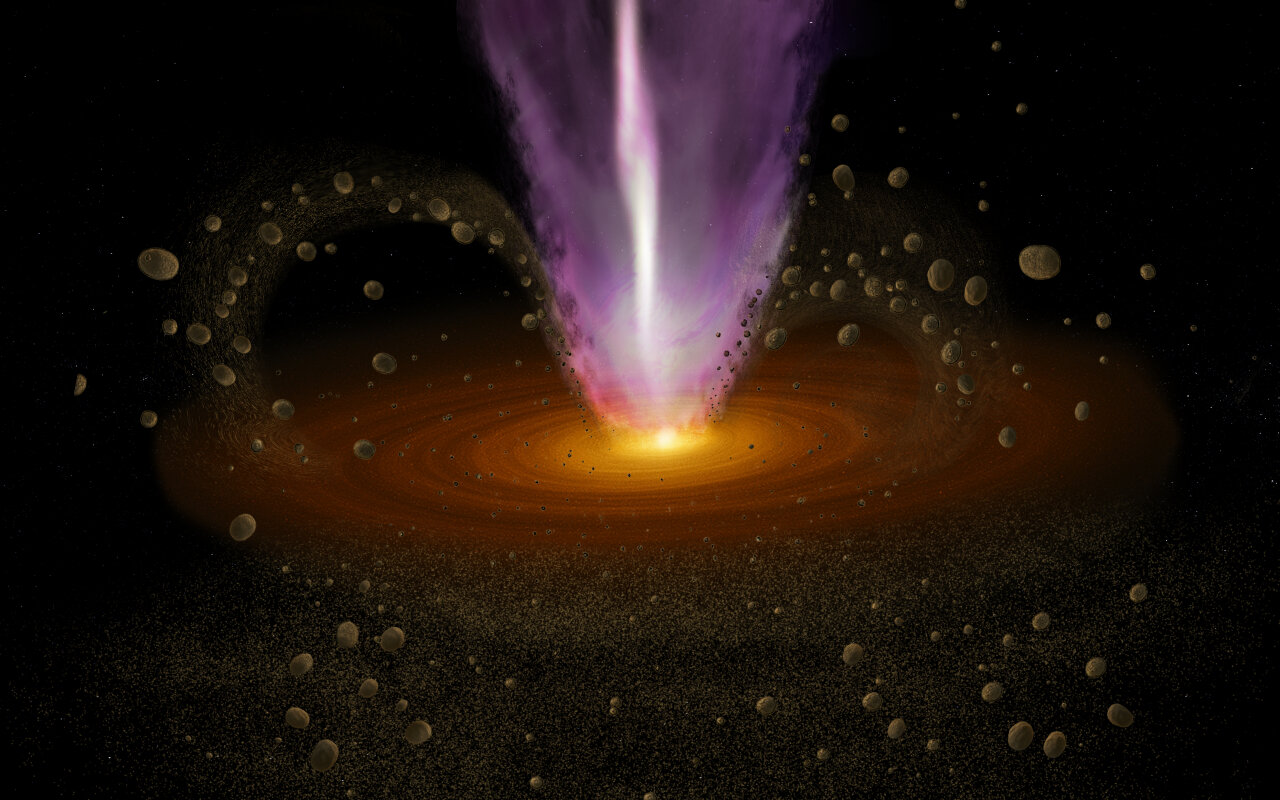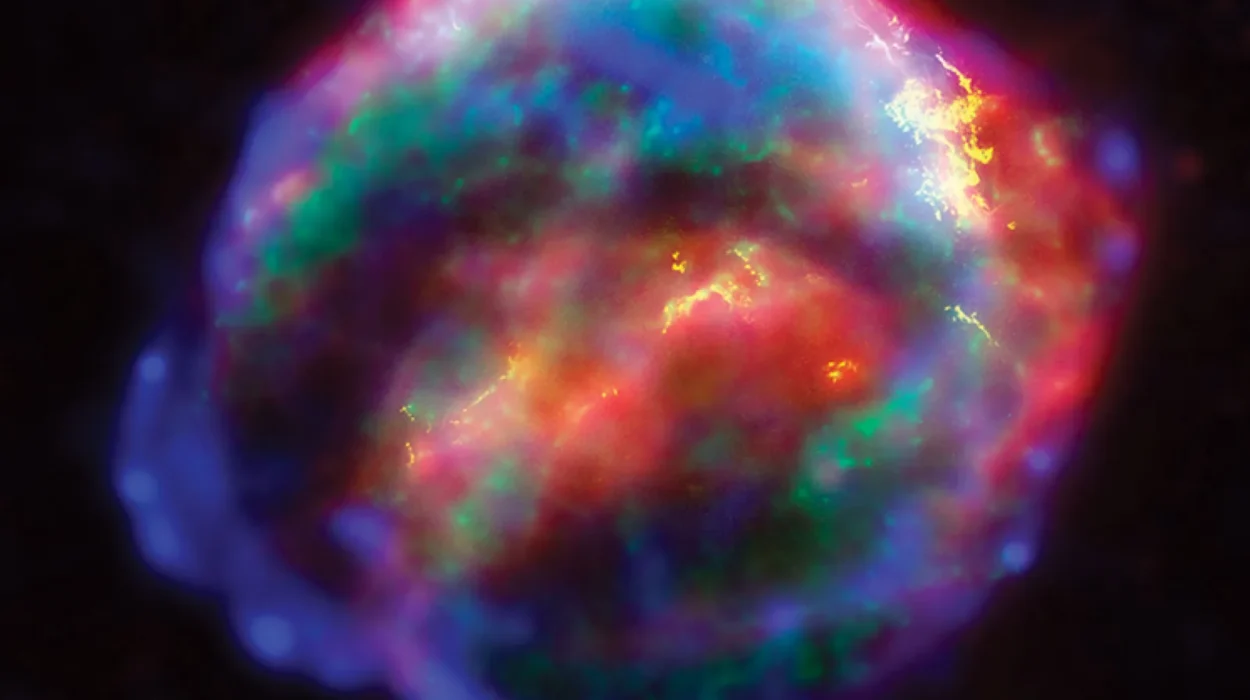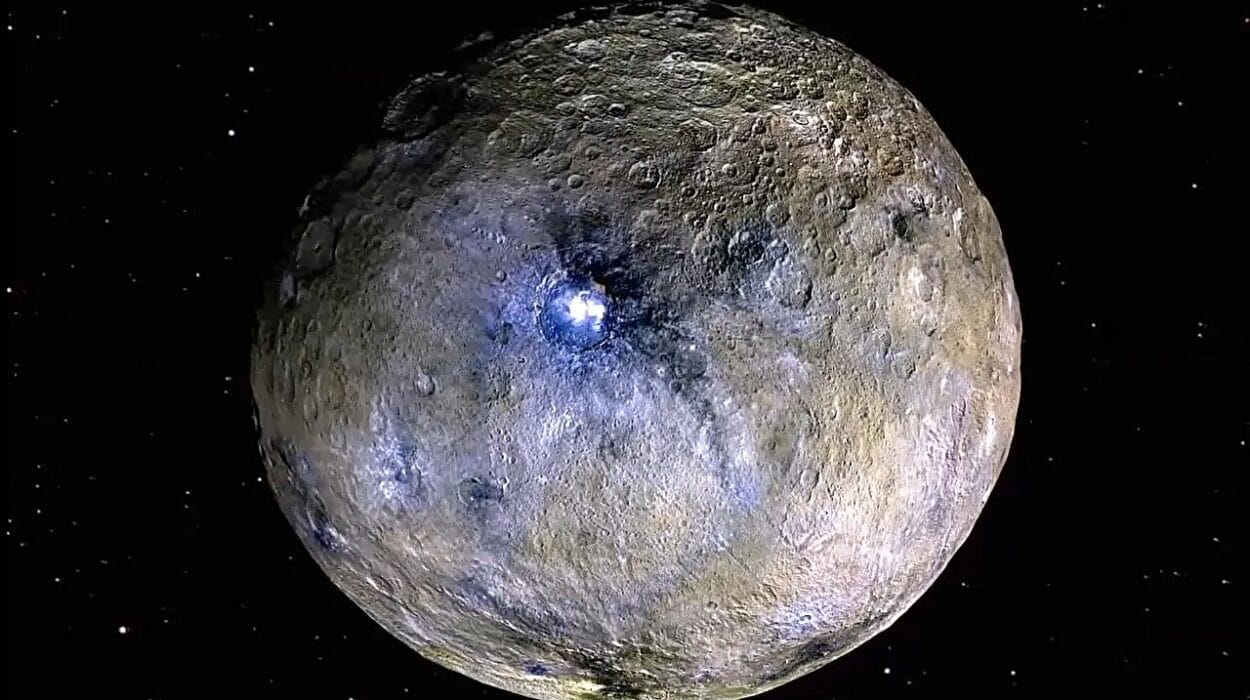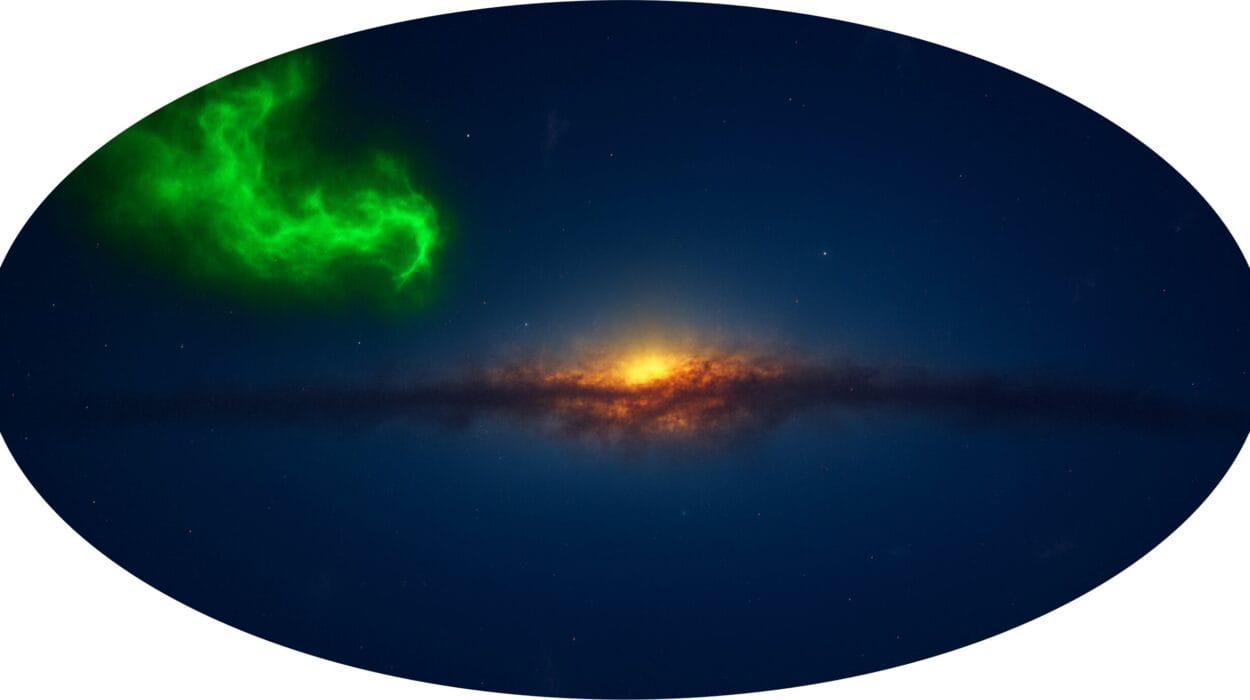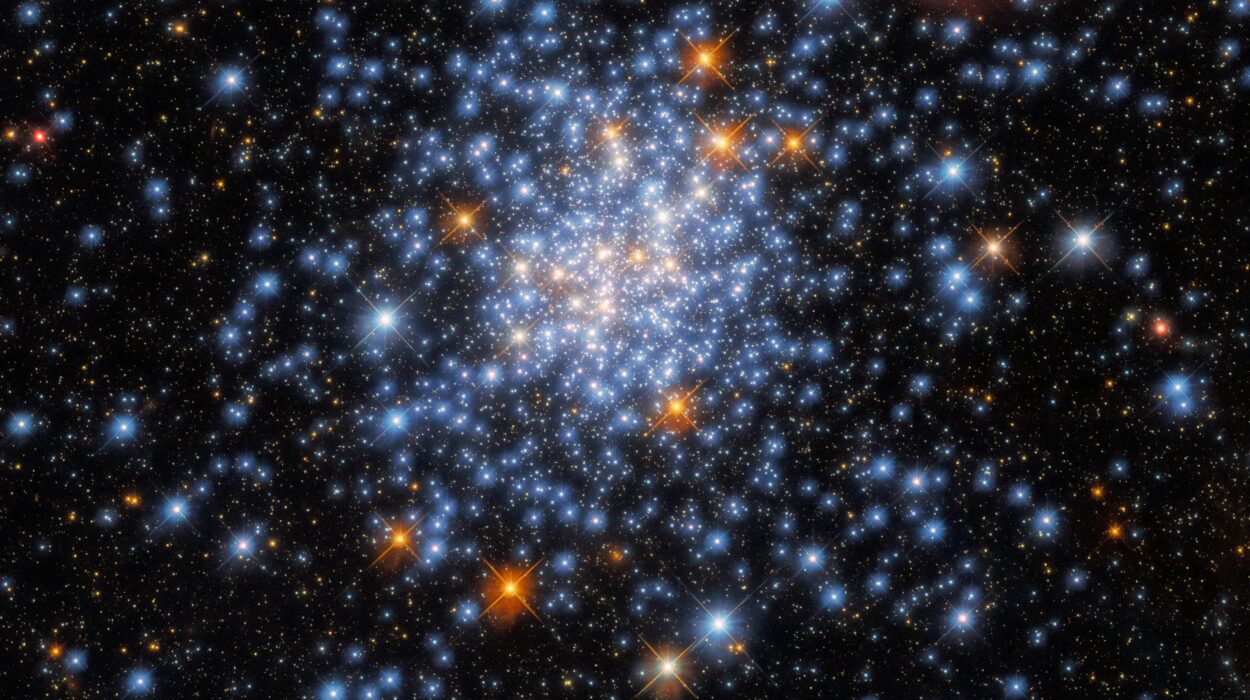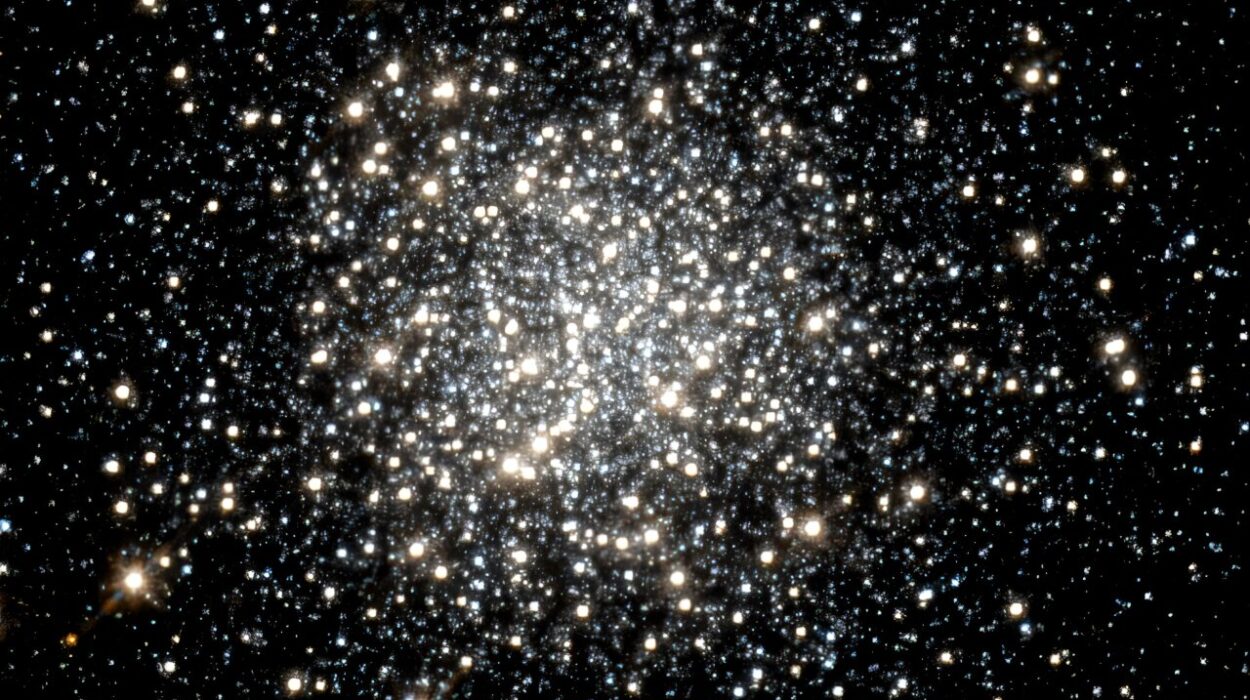In a quiet pocket of space, 450 light-years from Earth, a pair of infant stars are whispering secrets of creation. Amid clouds of gas and dust swirling around them, something extraordinary has been found—millimeter-sized grains of dust, larger than any previously seen so early in the life of a star. These aren’t just cosmic curiosities. They may be the seeds from which entire planets like ours are born.
Using the powerful eyes of the Atacama Large Millimeter/submillimeter Array (ALMA) in northern Chile, a global team of over 50 astronomers and chemists has uncovered a possible solution to one of the most frustrating mysteries in astronomy: how dust grains in newborn solar systems survive long enough to grow into planets.
“This discovery not only provides a new mechanism for building planets but also offers a glimpse into how our own solar system may have formed,” said Giovanni Sabatini, lead author of the new study and a scientist with Italy’s National Institute for Astrophysics (INAF) at the Arcetri Astrophysical Observatory in Florence.
The findings, published in the journal Astronomy & Astrophysics, don’t just add a piece to the planet-formation puzzle—they may rewrite part of it.
The Dusty Dilemma: The “Meter-Size Barrier”
Planet formation, at its heart, is a story of dust—tiny particles clumping together, colliding, sticking, and growing into something unimaginably big. But that journey has a hidden trap. Somewhere between the size of a grain of sand and a meter-long boulder, physics throws up a roadblock.
It’s called the “meter-size barrier.” The problem? Dust grains at this size either spiral into their parent star, caught in its gravity and gas drag, or they smash into each other and shatter before they can grow. For decades, scientists have struggled to explain how grains leap past this perilous point on their journey to becoming planets.
Now, the FAUST project—short for the Fifty AU STudy of the chemistry in the disk/envelope systems of Solar-like protostars—has offered a new escape route.
ALMA’s Unprecedented Glimpse into Stellar Cradles
The discovery centers on the young binary star system L1551 IRS5, located in the Taurus Molecular Cloud. Here, ALMA’s ultra-sensitive detectors peered into the outflow cavity—the region where strong stellar winds carve tunnels through the surrounding cloud. What astronomers found was unexpected: millimeter-sized dust grains embedded in the walls of this cavity.
These grains are about 10,000 times larger than the average interstellar dust particle—significantly large for a star so young.
Claire Chandler, a scientist with the National Science Foundation’s National Radio Astronomy Observatory (NRAO) and co-lead of the FAUST collaboration, called it a turning point. “The findings open exciting new questions about the diversity of planetary systems in our galaxy and bring us closer to understanding our cosmic origins.”
The theory is both elegant and thrilling. These dust grains likely formed in the dense, inner regions of the protostellar disk—the flat, rotating plane of material that encircles a newborn star. From there, winds ejected by the growing stars lifted the grains outward, depositing them in the outflow cavity walls. Here, farther from the destructive pull of the star, they may have the time and space needed to continue growing, sticking together instead of falling apart.
A New Cosmic Conveyor Belt
This mechanism—transporting grains away from danger—may be a critical missing piece in our understanding of how rocky planets form.
“Instead of falling into the star or colliding at high speeds and fragmenting, these grains are essentially given a second chance,” said Sabatini. “They’re carried to a safer zone where they can continue their journey toward becoming planets.”
It’s a bit like a cosmic conveyor belt: dust forms close to the star where conditions are right, then rides the stellar winds to a quieter neighborhood. And there, in the stillness of the outer disk, gravity and time can work their magic.
The implications extend far beyond this one star system. If such a process is common—and there’s every reason to suspect it might be—it could mean that planet formation is more robust, more widespread, and more resilient than we once believed.
What This Means for Earth and Beyond
For astronomers trying to understand the origin of Earth-like planets, this discovery is golden. It suggests that rocky worlds may have a better chance of forming even in turbulent stellar nurseries. And it supports the idea that our solar system’s history isn’t unique—it may, in fact, be one story among many unfolding across the galaxy.
“This mechanism might be exactly what was needed to overcome the meter-size barrier in our own solar system’s past,” Chandler said. “It connects the dots between the raw materials of stars and the eventual rise of planets—and even, perhaps, life.”
The discovery also underscores the importance of chemistry in shaping the cosmos. FAUST isn’t just about rocks and gas—it’s about molecules, environments, and interactions that determine what kinds of planets will emerge from a given cloud of star-forming dust.
A Glimpse of the Future
As ALMA and other observatories continue to refine our view of the cosmos, we’re entering a golden age of discovery. Where once we only guessed at how planets formed, we can now watch it happen in real time, light-years away.
There’s still much to uncover. Are these outflow-ejected grains common in other systems? Do they carry with them the complex molecules needed for life? Could this process be the norm, rather than the exception?
“We’re standing on the edge of a new frontier,” said Sabatini. “Every time we look closer, the universe gives us more to wonder about.”
In those glowing clouds surrounding newborn stars, in the fierce winds that carry cosmic dust across light-years of space, the building blocks of worlds are taking shape—quietly, beautifully, and maybe more often than we ever imagined.
Reference: G. Sabatini et al, FAUST XXIV. Large dust grains in the protostellar outflow cavity walls of the Class I binary L1551 IRS5, Astronomy & Astrophysics (2025). DOI: 10.1051/0004-6361/202554750
